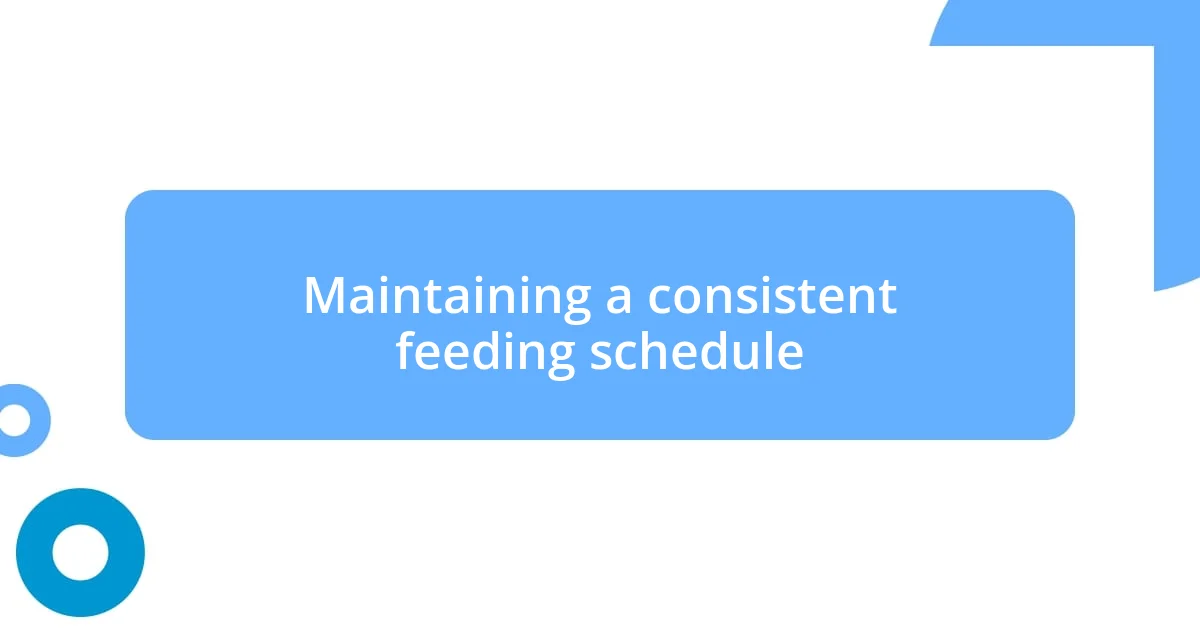Key takeaways:
- A sourdough starter requires regular feeding and maintenance to thrive, fostering a connection between the baker and their food.
- The type and temperature of water used are crucial for a starter’s growth; filtered water with a neutral pH is ideal.
- Stability in environment and container choice can greatly impact the starter’s health and flavor during long-term care.

Understanding sourdough starter basics
A sourdough starter is essentially a living culture of flour and water. When I first started my sourdough journey, I was fascinated by the idea that wild yeast and bacteria could transform simple ingredients into something beautiful. Have you ever wondered how something so basic can result in such delicious bread? It really made me think about the magic happening right in my kitchen.
The beauty of a sourdough starter lies in its ability to develop flavor and texture over time. Early on, I remember the excitement of seeing my starter bubble and grow; it felt like nurturing a little pet! Every day, I’d peel back the lid and marvel at the life inside the jar. It’s this daily connection that made me appreciate the science behind it.
Maintaining a sourdough starter requires a bit of commitment, but the reward is truly worth it. I’ve learned that feeding it regularly is crucial—don’t you hate it when you forget to water a plant? The same principle applies here; your starter needs nourishment to flourish. It’s this routine that ties you to your baking journey, creating not just bread, but a relationship with your food.

Ideal water for your sourdough
When I first began experimenting with sourdough, I quickly learned that the type of water I used could significantly affect my starter’s growth and vitality. It wasn’t until I switched to filtered water that I noticed a real change. My starter became more active, bubbling enthusiastically as if it were thanking me for the upgrade! Chlorine and fluoride, often found in tap water, can throw off the balance of this delicate ecosystem.
To ensure your sourdough starter thrives, keep these water tips in mind:
- Use filtered or spring water: This avoids chlorine and other additives, allowing the natural yeast and bacteria to flourish.
- Temperature matters: Room temperature water helps maintain a stable environment—cold water can slow down the fermentation process.
- pH level: Ideally, aim for neutral pH around 7. Using water that’s too acidic or alkaline could hinder your starter’s growth.
These small changes made a world of difference for me, and I’m excited for you to experience that too!

Maintaining a consistent feeding schedule
Maintaining a consistent feeding schedule is crucial for the health of your sourdough starter. I’ve often found that sticking to a routine keeps my starter lively and robust. For instance, I feed mine every day when I’m actively baking, feeling a sense of pride each time I see it double in size—a clear indication that my schedule is paying off.
When it comes to timing, I recommend sticking with your regular feeding times as closely as possible. I once tried varying my schedule, thinking my starter would adapt. Unfortunately, it became sluggish and less bubbly. Now, I treat feeding my starter like an appointment I can’t miss; after all, it’s the lifeblood of my sourdough adventures!
To help visualize how different feeding frequencies affect your starter, I’ve created a quick comparison table. It showcases the outcomes of regular versus irregular feeding, which can guide you toward a thriving sourdough culture.
| Feeding Frequency | Effects on Starter |
|---|---|
| Every 12 hours | Highly active, predictable rise |
| Every 24 hours | Good activity, but possible decline |
| Every 48 hours | Slow and less reliable growth |

Troubleshooting common starter issues
There have been moments when my sourdough starter just didn’t seem to want to cooperate. Maybe it was too watery or perhaps it had developed an unpleasant odor—definitely signs something was off. I learned through trial and error that a lack of bubbles often meant my starter needed more frequent feedings, typically every 12 hours, to ignite that fermentation magic again. Has this ever happened to you? If so, don’t fret; your starter is just telling you it needs a little more attention.
Another issue I faced was a layer of liquid forming on top of my starter, known as “hooch.” At first, I panicked and thought I’d ruined it, but then I learned it’s a natural occurrence. Hooch is a result of feeding too infrequently and indicated that my starter was hungry. Giving it a good stir and feeding it right away made a world of difference. I was pleasantly surprised by how quickly it recovered—in fact, seeing it come back to life was one of the most gratifying moments in my baking journey!
If you’ve noticed a funky smell or your starter’s growth has stalled, consider these possible fixes. Sometimes, a simple tweak like changing the temperature can bring life back into your mix. I once relocated my starter from a cooler corner of my kitchen to a warmer spot, and it thrived like never before! Isn’t it amazing how delicate adjustments can lead to such significant changes? Trust your instincts, and remember, experimentation is part of the process.

Tips for long-term starter care
Caring for a sourdough starter over the long haul requires a bit of finesse. I always keep my starter in a temperature-controlled environment because I’ve noticed that fluctuations can significantly impact its personality. For example, I once kept mine next to a window, and when the sun peeked through, my starter became overly vigorous and then downright sluggish when the temperature dropped in the evening. Stability, I’ve realized, is key to nurturing a happy starter.
Another important tip is to store your starter in a clean, non-reactive container. When I first began my journey, I used an old metal bowl, and to my surprise, it altered the flavor and interaction of my starter. Switching to a glass jar made a difference I could taste. You might think it’s a minor detail, but the right container can truly enhance its ecosystem, giving those beneficial yeasts a perfect home to flourish.
Lastly, don’t be afraid to experiment with hydration levels. Initially, I fed my starter with equal parts water and flour, but then I tried a lower hydration ratio, and it was like discovering a new dimension in my baking. The thicker consistency led to a more stable structure, which became particularly useful during warmer months. Have you found a method that feels right for you? Trust your instincts—a bit of trial and error can lead to delightful surprises in your sourdough journey!














